Michel Mayor
Biographical
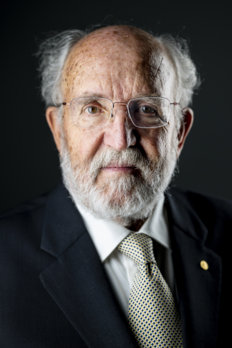
Biography*
My family, childhood and education
I was born in 1942 in Lausanne, Switzerland, a small town along Lake Leman where I started elementary school. My father was a police commissioner with positions in different cities. When I was six years old, my family moved to Cully, a superb village in the vineyards along the same lake and four years later to Aigle, a small town of less than ten thousand inhabitants in the upper Rhone Valley, in the midst of the mountains.
During my 5 years at school in Aigle, when I was aged 11–16, I had an exceptional teacher of science, Edmond Altherr. He was the Director of the College and a teacher, but nevertheless he continued to do research at home, on the nematodes, during his whole life. Nematodes are an animal phylum that includes some worms that are parasites of the human body. Although that does not look like a charming subject, he was able to convey a lot of enthusiasm about the study of nematodes and so he was able to stimulate our interest in science. A great pedagogue, really.
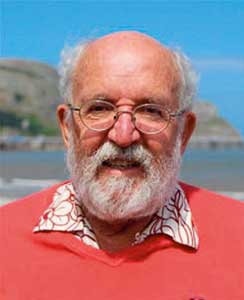
Figure 1. @Sian Prosser, Royal Astronomical Society.
Apart from school, I was an active member of the scouts: hiking, skiing, camping in high altitude mountains and every kind of outdoor activity. As a teenager, I began doing one of my most exciting sports: climbing. With Aigle so close to mountains, living there allowed me to regularly practice these sports. Climbing provides me with immeasurable pleasure but… at one stage I was very happy to be rescued from a deep crevasse without too much damage!
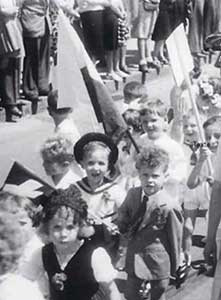
Figure 2. 1948, Lausanne, end of my first year at school!
I was obliged to move back to Lausanne to go to high school, as there was none in Aigle. After high school, I went to the University of Lausanne to study theoretical physics. When I was a child, I was always interested in science, but did not dream of being an astronomer. I was fascinated by every domain of sciences: wildlife, geophysics, geology, the Alps … But I loved mathematics, so I chose to study physics and mathematics at the University of Lausanne. After the first year I had to choose between them, and I chose physics. Professor Karl Gerhard Stuekelberg was my most important professor for theoretical physics. Students were fascinated by his very profound vision on physics and I chose to do my masters degree in theoretical physics (in 1966). My thesis was on the interaction of particles with large spin and was based on formalism of Steven Weinberg. In mathematics I had the privilege to have Georges De Rham as one of my professors. He is known for his major contributions in differential topology, but also as a great alpinist!
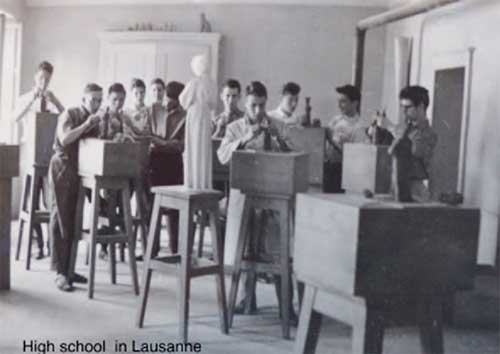
Figure 3. 1960, Science high school in Lausanne, but also some arts. (MM second from left).
In 1966 when I finished my studies at the university, I got married to Françoise. She was then a student in the natural sciences at the University of Lausanne. We have been blessed with three children, Anne, Claire and Julien and today five grandchildren.
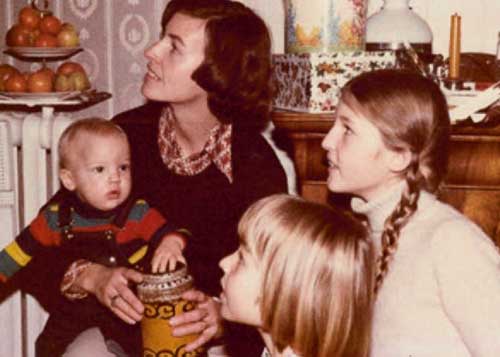
Figure 4. My family in 1977, Françoise and our three children.
For our children, Haute-Provence Observatory was a second home as the whole family came with me for numerous observing runs (at least during school holidays). It seems that our children have acquired the virus of scientific curiosity by listening to the discussions with friends at home or at Haute-Provence Observatory. Today, all of them share the same passion for research but in quite different domains.
First steps in science
After graduation, I got a position as a PhD student in the field of galactic dynamics at the University of Geneva.
The origin of galactic spiral structure had been a long-standing problem: if it was a result of a strong differential rotation, as appeared, then such galaxies would not keep their shape, but would wind themselves up. Professors C.C. Lin and Frank H. Shu proposed a theoretical explanation in 1963. I wanted to test the consequences of their idea on local stellar velocity fields to see how the spiral structure perturbed the mean flow of stars. This was the start of my interest in stellar kinematics, and I started my PhD study in this domain.
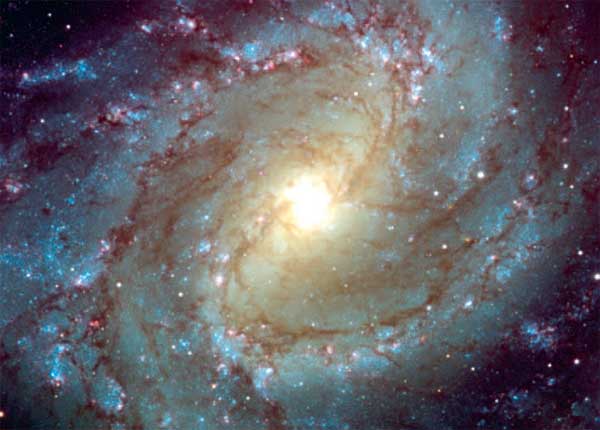
Figure 6. A galaxy similar to our Milky Way with a magnificent two spiral arm structure.
By the end of my PhD I was looking for observations to test these ideas, but the stellar velocities in catalogues were not adapted to my question. I needed new data. This was my critical motive for moving from theory to instrumentation, with a specific focus on the determination of stellar kinematics. By chance, at an N-body Colloquium in Cambridge, I met Roger Griffin and we talked about a new spectrographic method to measure stellar velocities by cross-correlation (Fellgett 1953, Griffin 1967). I was really impressed by this technique. It was evident we could make much progress in this domain, and I realized that this was what I needed to get my data. Back in Geneva, I discussed it with the director of our institute, who was in favor of this as a way to develop the observatory. But I think he wondered how I, a theorist, would dare build an instrument.
I needed advice, and André Baranne − professor of optics at Marseille Observatory in France − provided it. In fact, he found the problem interesting as he designed the optics… Sometimes it is easy to collaborate with people like this case, in science. This was my first cross-correlation spectrograph with more technical possibilities than Roger had envisaged and with a computer that made it very efficient.
A first CORAVEL instrument was installed in 1977 on our 1-meter Swiss telescope at the Haute-Provence Observatory and a second one on the 1.5-meter Danish at the ESO La Silla Observatory in Chile to have access to the southern sky. The huge efficiency gain of this new kind, fully optimized instruments opened for me the domain of the stellar kinematics. During more than 15 years, I have visited so many different domains: dynamics of globular clusters, cepheids and supergiants in the Magellan Clouds, stellar rotation and with Antoine Duquennoy double stars of the solar vicinity.
(Duquennoy and Mayor, 1991). The statistical properties of binary stars are fossil traces of stellar formation processes. The mass-ratio distribution of double stars was one of the observed results. The precision of the CORAVEL was just sensitive enough to detect companions at the very bottom of the main sequence… close to the domain of brown dwarfs and giant planets. The opportunity offered by the Haute-Provence Observatory to develop ELODIE at the very beginning of the nineties opened the path to the detection of brown dwarfs AND giant planets. Based on our long radial velocity monitoring of stars of the solar vicinity we have selected 142 single G and K stars as the stellar sample for our ELODIE program.
What conditions played a significant role in that discovery? The impressive efficiency of the cross-correlation spectroscopy, the on-line reduction of the measurements with its impact on the observing strategy, the large size of the stellar sample, the number of observing nights allocated to our program by the OHP observing committee and obviously the precision of the spectrograph. One hot Jupiter among 142 solar-type stars corresponds to the frequency of this kind of giant planets… we have not been especially lucky!
The discovery of 51 Pegasi b in 1995 completely changed the priorities of my research.
I was happy to have been associated with that first epoch of exoplanet discoveries.
After this first detection, not only have we continued our search in the northern hemisphere but in 1998 we have initiated a systematic search for exoplanets in the southern sky.
CORALIE, a spectrograph almost identical to our northern instrument, was installed on our quite new 1.2 m EULER telescope at La Silla observatory. Small telescope… but today having discovered more than 150 exoplanets.
At the very end of the nineties, in an answer to a call for proposals issued by ESO, I took the lead of the development of a new spectrograph to achieve a radial velocity precision of 1 m/s. Only after 3 years, in March 2003, we got the first light and the contractual goal of a precision of 1 m/s. For our consortium having built that instrument, the reward as measured by the number of 500 observing nights allocated for five years was at the level of the challenge.
Five hundred nights on a 3.6 m telescope devoted exclusively to a comprehensive program to detect and characterize exoplanets was a superb adventure for my colleagues and me.
Many of my PhD students are actively working in the field of exoplanets with outstanding results, for example Willy Benz, Didier Queloz, Nuno Santos, Christophe Lovis and Pedro Figueira.
The Kepler space mission has provided an exceptional harvest of transiting planets.
The comparative planetology requires having exoplanet radii (via transits) and masses (via Doppler spectroscopy). As the Kepler field is in the northern hemisphere, we have been obliged to develop a northern copy of our HARPS instrument (an instrument developed with Francesco Pepe as principal investigator). This program of that spectrograph installed on the 3.5 m Galileo telescope at La Palma Island, Spain, was focused on the physics of very low mass planets.
In 2007, I became emeritus professor at the University of Geneva with the privilege, still today, to continue contributing to transforming the old dream of Greek philosophers in the very active domain of present-day astrophysics.
* This biography is an updated version of Mayor, M and Cenadelli, D, 2018 in The European Physical Journal H, 43, pp. 1–43.
This autobiography/biography was written at the time of the award and later published in the book series Les Prix Nobel/ Nobel Lectures/The Nobel Prizes. The information is sometimes updated with an addendum submitted by the Laureate.
Nobel Prizes and laureates
See them all presented here.
